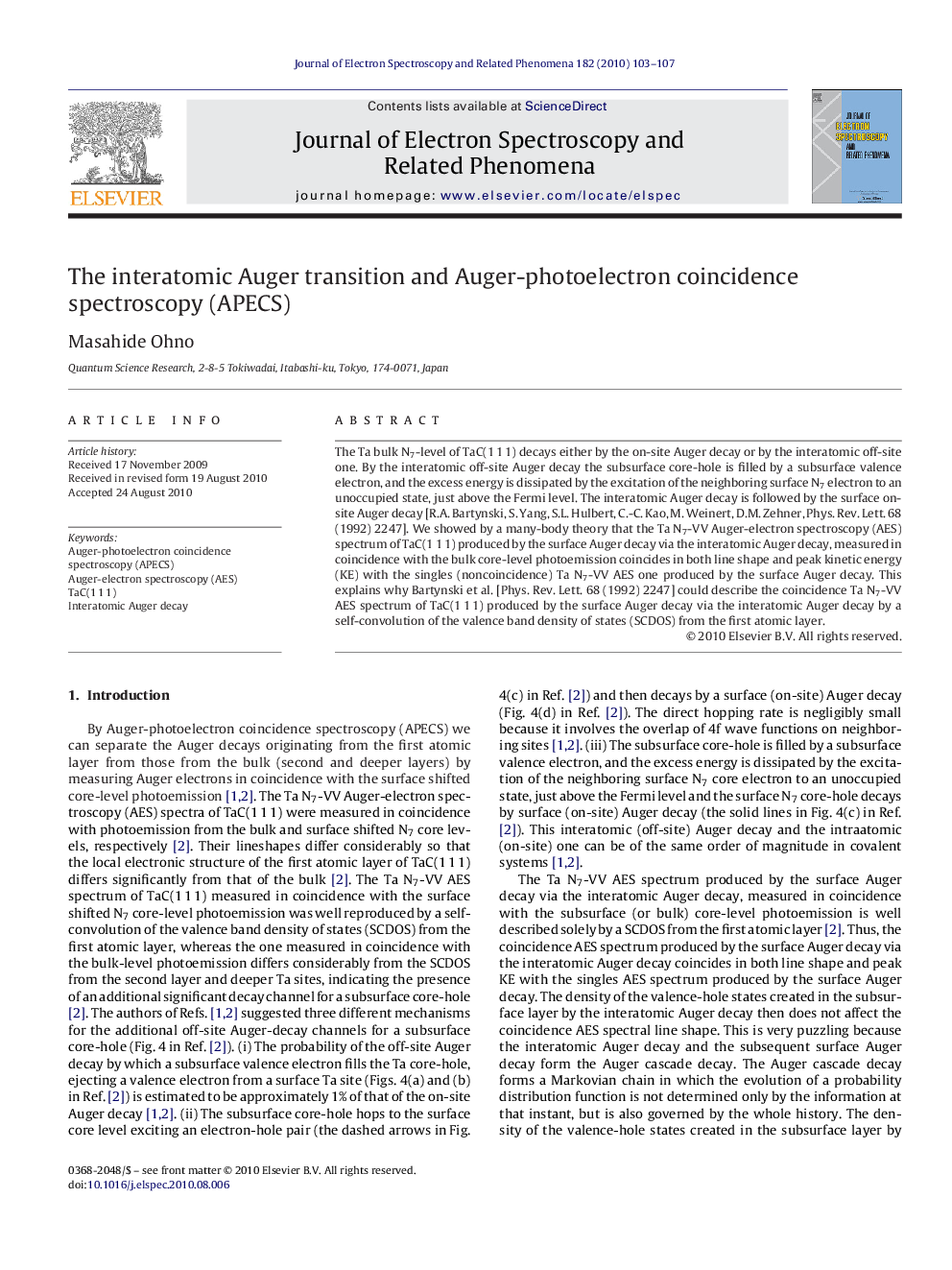| Article ID | Journal | Published Year | Pages | File Type |
|---|---|---|---|---|
| 5396532 | Journal of Electron Spectroscopy and Related Phenomena | 2010 | 5 Pages |
Abstract
The Ta bulk N7-level of TaC(1Â 1Â 1) decays either by the on-site Auger decay or by the interatomic off-site one. By the interatomic off-site Auger decay the subsurface core-hole is filled by a subsurface valence electron, and the excess energy is dissipated by the excitation of the neighboring surface N7 electron to an unoccupied state, just above the Fermi level. The interatomic Auger decay is followed by the surface on-site Auger decay [R.A. Bartynski, S. Yang, S.L. Hulbert, C.-C. Kao, M. Weinert, D.M. Zehner, Phys. Rev. Lett. 68 (1992) 2247]. We showed by a many-body theory that the Ta N7-VV Auger-electron spectroscopy (AES) spectrum of TaC(1Â 1Â 1) produced by the surface Auger decay via the interatomic Auger decay, measured in coincidence with the bulk core-level photoemission coincides in both line shape and peak kinetic energy (KE) with the singles (noncoincidence) Ta N7-VV AES one produced by the surface Auger decay. This explains why Bartynski et al. [Phys. Rev. Lett. 68 (1992) 2247] could describe the coincidence Ta N7-VV AES spectrum of TaC(1Â 1Â 1) produced by the surface Auger decay via the interatomic Auger decay by a self-convolution of the valence band density of states (SCDOS) from the first atomic layer.
Related Topics
Physical Sciences and Engineering
Chemistry
Physical and Theoretical Chemistry
Authors
Masahide Ohno,
